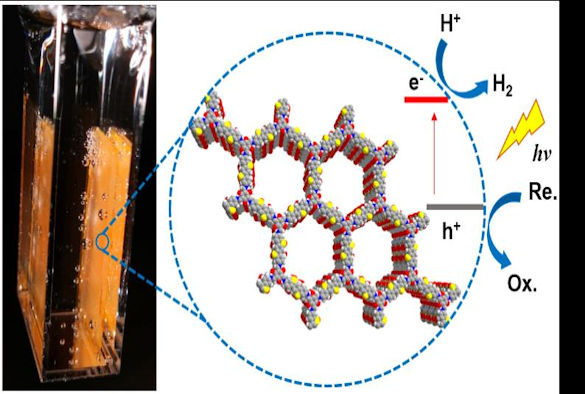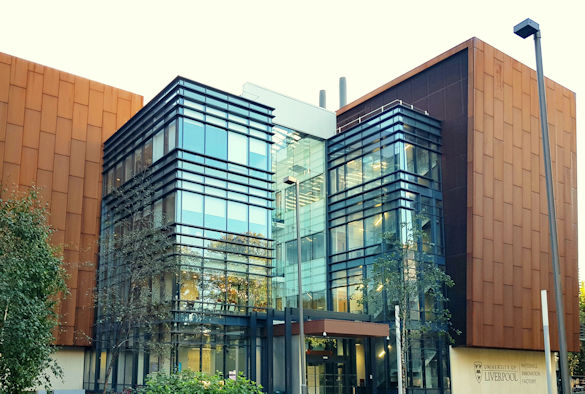Researchers discover highly active organic photocatalyst
Published on

Scientists from the University of Liverpool, University College London and East China University of Science and Technology have synthesized a new organic material that can convert water into hydrogen fuel using sunlight.
Photocatalytic solar hydrogen production—or water splitting—offers an abundant clean energy source, but only if the energy in sunlight can be harvested effectively. Inorganic materials are better known as water splitting catalysts, but organic catalysts can also be built from cheap abundant elements, such as carbon, nitrogen, and sulphur.
The Liverpool-led team used a combination of experiment and computation to discover a highly active organic photocatalyst. This also revealed some basic design principles, which may guide even better catalysts in the future.
Mr Xiaoyan Wang, the Liverpool Chemistry PhD student who led the experimental work, said: “To achieve high hydrogen evolution rates, you need good water affinity, broad light adsorption, high surface area, and high crystallinity. By introducing all of these features in one material, we got a very active photocatalyst.”
Mr Wang’s PhD project is co-funded by the China Scholarship Council (CSC) and the University of Liverpool, through a joint PhD programme that started in March 2016. This programme attracts talented PhD candidates from China to carry out their studies in the world-leading Materials Innovation Factory at the University of Liverpool.
Professor Andrew Cooper FRS, academic lead for the study, said: “This project was a multinational collaboration involving researchers from China, Germany, the Netherlands, and the UK. It is a good example of the vital need to hire the best researchers from all over the world, and to collaborate with teams in other countries. Top-level science is an international endeavour.”
The project was funded by the Engineering and Physical Science Research Council (EPSRC), the Leverhulme Trust (the Leverhulme Research Centre for Functional Materials Design), and the European Research Council.
The paper `Sulfone-containing covalent organic frameworks for photocatalytic hydrogen evolution from water` (doi:10.1038/s41557-018-0141-5) is published today (1 October 2018) in Nature Chemistry.
The Materials Innovation Factory is an £81 million project dedicated to the research and development of advanced materials. The 11,600 square metre facility, established in collaboration with Unilever, brings together materials chemistry expertise with the latest computational and robotic equipment to accelerate research and reduce the development time for new products to address societal needs.
The Materials Innovation Factory will be officially opened by the President of the Royal Society and Nobel Laureate, Sir Venki Ramakrishnan, on Friday, 5 October 2018.
